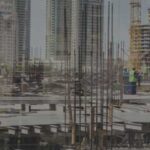Structural inspection
- Home
- portfolio
- Structural inspection
- Structural inspection
A structural inspection is a comprehensive assessment of a building’s structural integrity. It is crucial for identifying potential issues and ensuring the safety and longevity of the structure. Here’s a detailed guide on structural inspections:
What is a Structural Inspection?
A structural inspection involves examining the foundation, framing, walls, floors, and roof of a building. It is typically conducted by a licensed structural engineer or a qualified building inspector to ensure that the structure is sound and complies with building codes and regulations.
When to Get a Structural Inspection
Buying or Selling a Property:
- To identify any structural issues before purchasing a property.
- To provide buyers with assurance of the building’s integrity.
After Natural Disasters:
- Following events like earthquakes, floods, or hurricanes.
Visible Signs of Damage:
- Cracks in walls, floors, or foundation.
- Sagging or uneven floors.
- Doors and windows that stick or do not close properly.
Renovation or Expansion:
- Before undertaking significant renovations or adding to the structure.
Key Components of a Structural Inspection
Foundation:
- Check for cracks, settlement, and water damage.
- Assess the condition of footings and piers.
Framing:
- Examine the integrity of beams, joists, and columns.
- Look for signs of wood rot, insect damage, or warping.
Walls:
- Inspect interior and exterior walls for cracks, bowing, or leaning.
- Assess the condition of load-bearing walls.
Floors:
- Check for sagging, uneven surfaces, or bouncing.
- Look for signs of water damage or structural weakness.
Roof:
- Inspect the roof structure, including rafters and trusses.
- Check for signs of leaks, sagging, or damage.
Basement and Crawl Spaces:
- Look for moisture, mold, or water infiltration.
- Check for adequate ventilation and signs of structural damage.
Steps in a Structural Inspection
Pre-Inspection Preparation:
- Gather property information and previous inspection reports.
- Identify specific concerns or areas of focus.
Exterior Inspection:
- Examine the building’s exterior, including foundation, walls, and roof.
- Check for drainage issues, grading, and landscaping impact.
Interior Inspection:
- Inspect all accessible areas, including attic, basement, and crawl spaces.
- Use tools like moisture meters and levels to assess structural components.
Documentation:
- Take detailed notes and photographs of any issues or areas of concern.
- Create a comprehensive report outlining findings and recommendations.
Post-Inspection:
- Review the report with the property owner or potential buyer.
- Discuss necessary repairs, estimated costs, and potential risks.
Benefits of a Structural Inspection
Safety:
- Ensures the building is structurally sound and safe for occupants.
Financial Protection:
- Identifies issues that could lead to costly repairs if left unaddressed.
- Provides a basis for negotiating property prices or repair costs.
Compliance:
- Ensures the building meets local building codes and regulations.
Peace of Mind:
- Offers reassurance about the condition and longevity of the structure.
Hiring a Structural Inspector
Qualifications:
- Ensure the inspector is licensed and has relevant experience.
Reputation:
- Check reviews and ask for references from previous clients.
Scope of Services:
- Confirm what is included in the inspection and report.
Cost:
- Obtain quotes from multiple inspectors and compare services.
Conclusion
A structural inspection is an essential step in maintaining the safety and integrity of any building. Whether you are buying, selling, or maintaining a property, a thorough inspection can help identify potential issues and ensure the long-term stability of the structure. By hiring a qualified inspector and addressing any identified problems promptly, you can protect your investment and ensure the safety of the building’s occupants.




